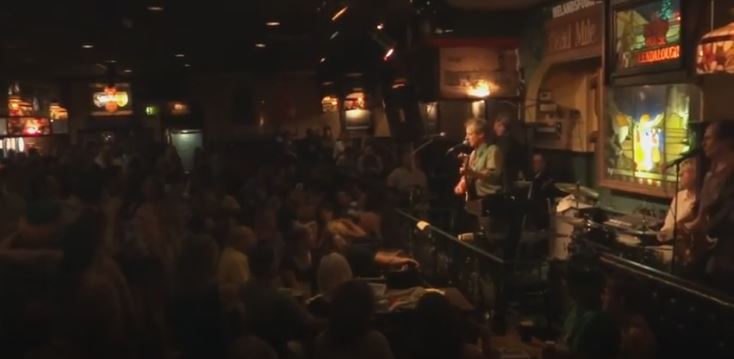As Much as We Want it to Be, The Pandemic Isn’t Over
[vc_row][vc_column][vc_column_text]
Everyone wants the pandemic to be over. I feel it in my own life. Tempers are frayed. More than anything, I think we need a chance to blow off some steam.
When I lived in Washington, DC, I had a tight group of friends. We had our haunts—places that we would go back to again and again. One of those places was Ireland’s Four Provinces—or “4Ps,” as everyone called it, up on Connecticut Avenue. I had a dear friend who lived in that neighborhood and we would walk up there for beers or live music. Over the years, we came to love—it’s not too strong a word—the Sean Fleming Band—three guys and their guitars who would lead the bar in every song you knew—and if you didn’t know a song, you faked it and you’d know it next month when the band came back around. They played everything from IRA ballads—it was an Irish bar—to a mash-up of popular hits, to Shel Silverstein’s “Unicorn Song.” There was frequent step-dancing in the aisles and often people would wind up on stage singing with the band. The beer would flow and the laughs were easy on those nights.
After my old boss John Kerry lost in 2004, I was pretty depressed for the rest of November and most of December. Then my friends dragged me up to see Sean Fleming at the 4Ps. I sat there nursing a beer, trying my best not to be a downer, but I’m sure I wasn’t very convincing. Then somewhere in the second set a woman sitting at the table behind me hopped up and began doing an interpretive dance on her chair to the band’s rendition of Billy Joel’s “Piano Man.” When I turned to see what was going on behind me, I laughed for the first time in months, the pallor lifted, I breathed easy, and I found myself back among the living.
I’d love to have a night like that tonight.
But where I live, the virus is still near its peak. In a city of about 50,000, we’re still seeing dozens of new cases every day. More than 1000 residents have been infected and 36 have died. Nationally, the numbers seem to be growing. Where a few weeks ago we were talking about 40,000 or 50,000 dead, we’re now past 70,000 and the White House’s Coronavirus advisor Dr. Birx said over the weekend that the internal numbers at the White House have consistently projected a range of between 100,000 to 240,000 killed by the virus in the United States.
So it shocked me earlier this week to hear that the White House was considering wrapping up the Coronavirus task-force. When the White House announced the formation of the group on January 29, 2020, the press secretary said in a statement the task force would “monitor, contain, and mitigate the spread of the virus.” Yet at every turn, the U.S. response has faltered. Because our testing was so poorly organized, we never had enough testing available—and we still don’t—to do the kind of disease surveillance that has worked in other countries. Because we were unaware of the spread of the virus in vast communities, we were not able to contain it. And while thousands of front-line healthcare workers have done everything in their power to mitigate the impact of this virus, governors and public health officials have had to go to extraordinary lengths to get the resources they need to protect those doctors and nurses and techs on the frontlines.
I’m left to conclude that President Trump wants a political win in November more than he wants to defeat this virus and that the only way he can achieve that is to declare victory and come home. We’ve seen some of this already in his Fox News townhall from the Lincoln Memorial, in his remarks from the briefing room podium every day, and in his interview with ABC News earlier this week. In Vietnam, some talked about securing “a decent interval” after which the United States could withdraw. But we can’t withdraw from this virus—as much as we want to—so governors are telling their states to learn how to operate with coronavirus in their midst, at least until we have a safe and effective vaccine.
But the great arbiter of truth in this campaign may turn out to be a single strand of RNA—the coronavirus itself. The White House’s own internal numbers predict that 3,000 Americans will be dying each day by about June 1. That’s a loss of life equivalent to one 9/11 each day. This isn’t a time to be wrapping up the work of the coronavirus task force: it’s a time to double down.
I’ve already told myself that when the bars are open and the music is playing again, I’m going to track down the Sean Fleming Band—the 4Ps closed years ago—and see them again. Just imagining that night makes me smile. Until then, we all have to live in the real world, listen to the science, and not let our desire for normalcy and carefree days—whether we are private citizens or candidates for president—prolong the pandemic.
[/vc_column_text][/vc_column][/vc_row]

